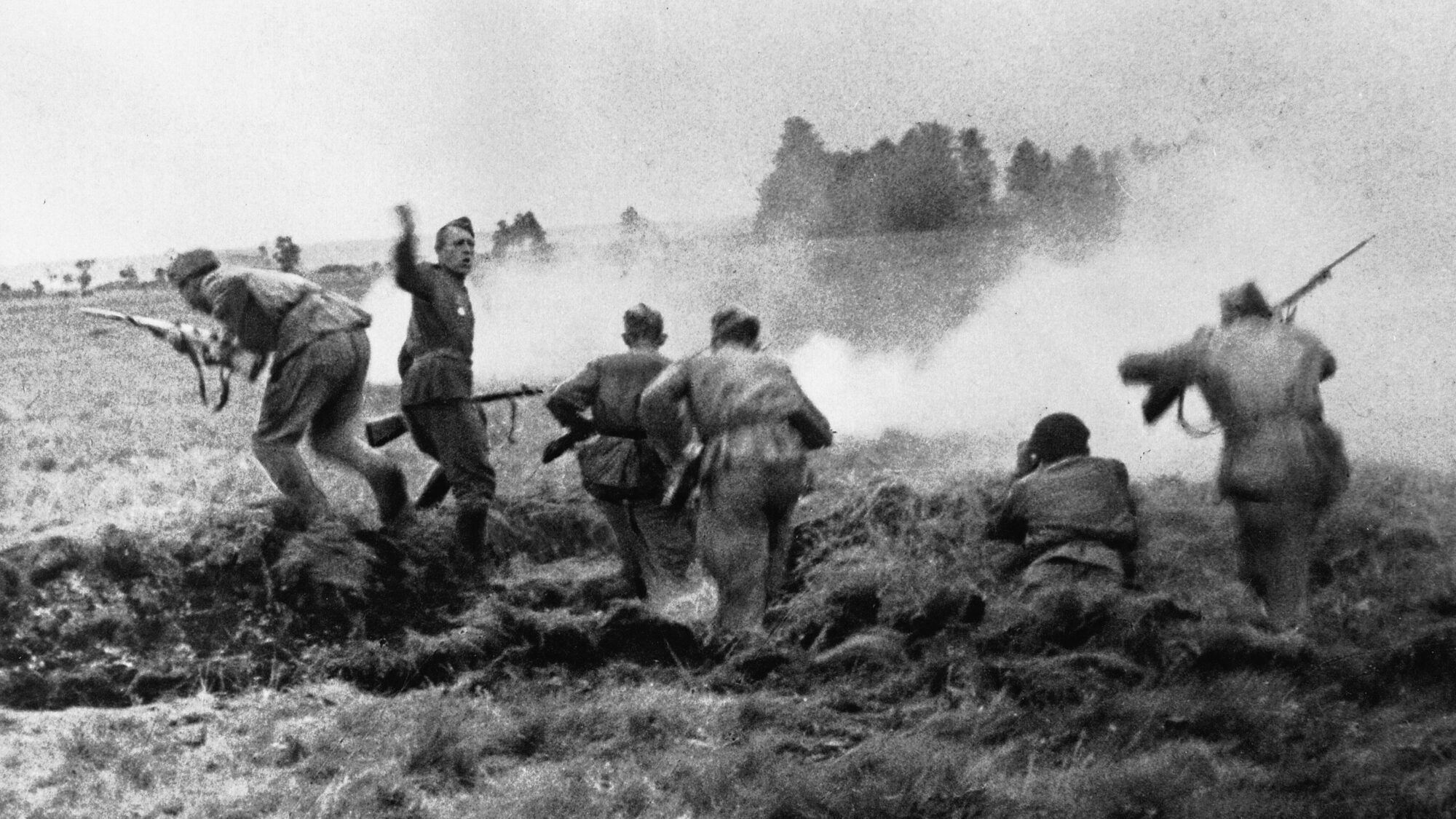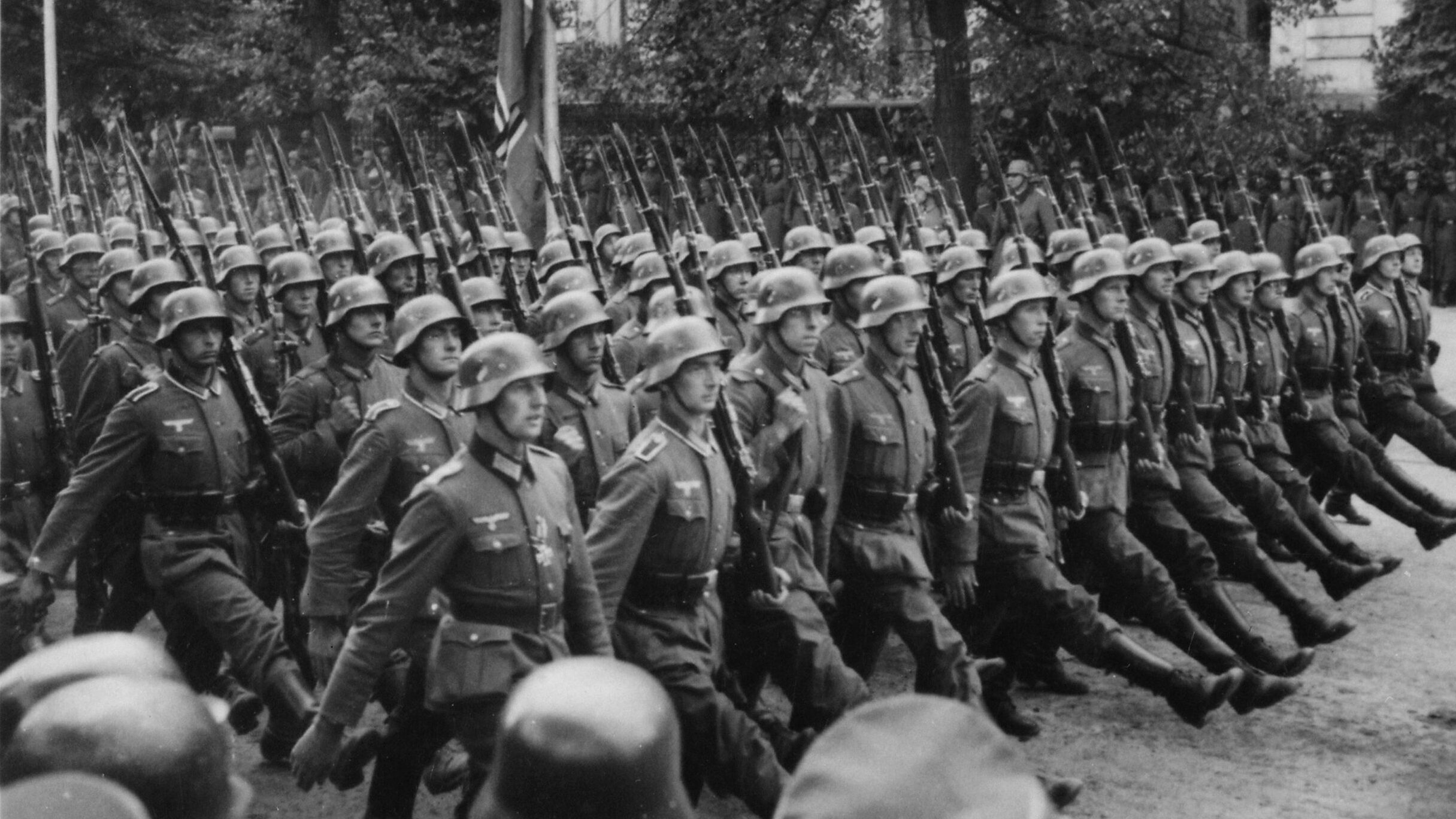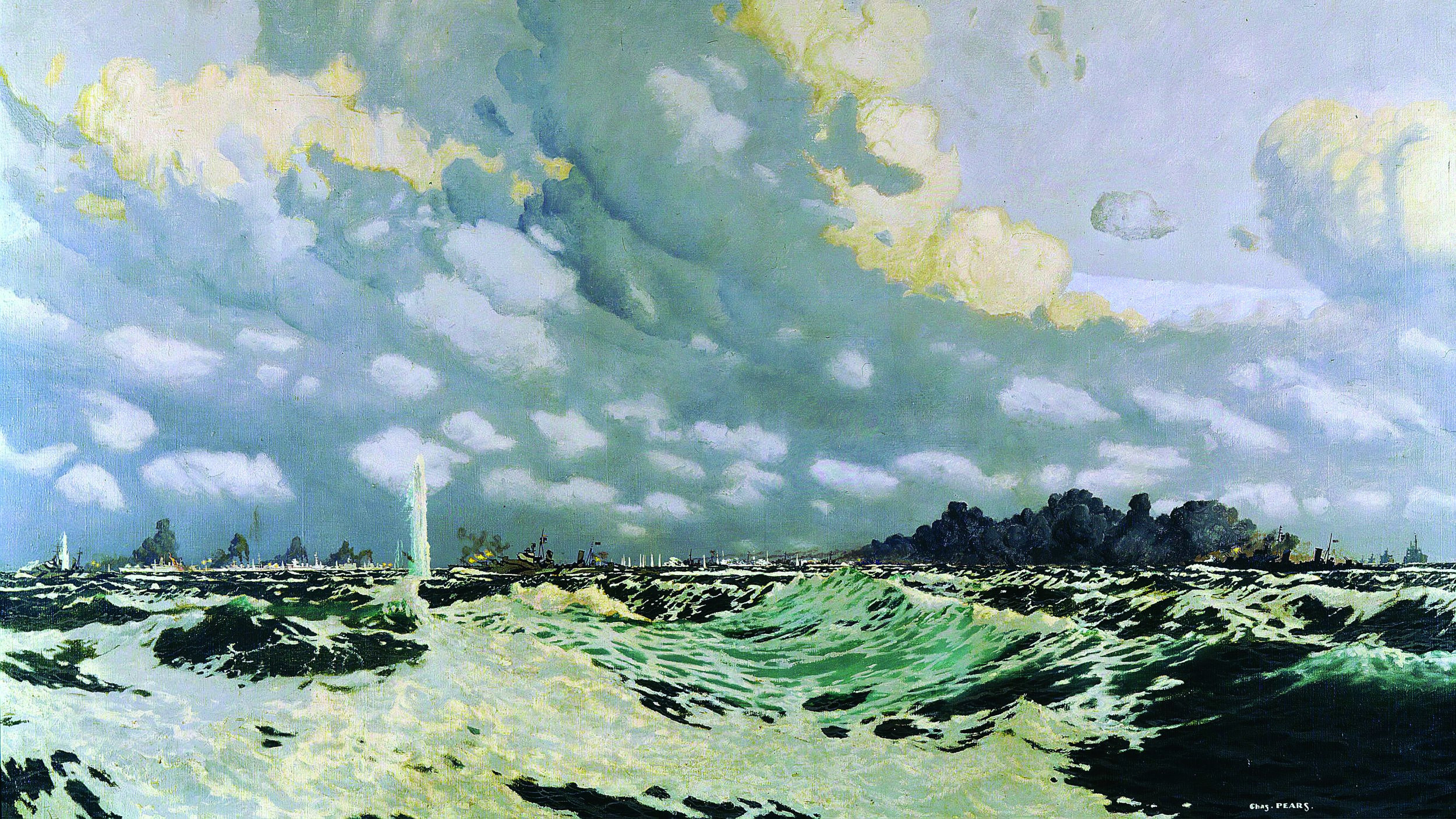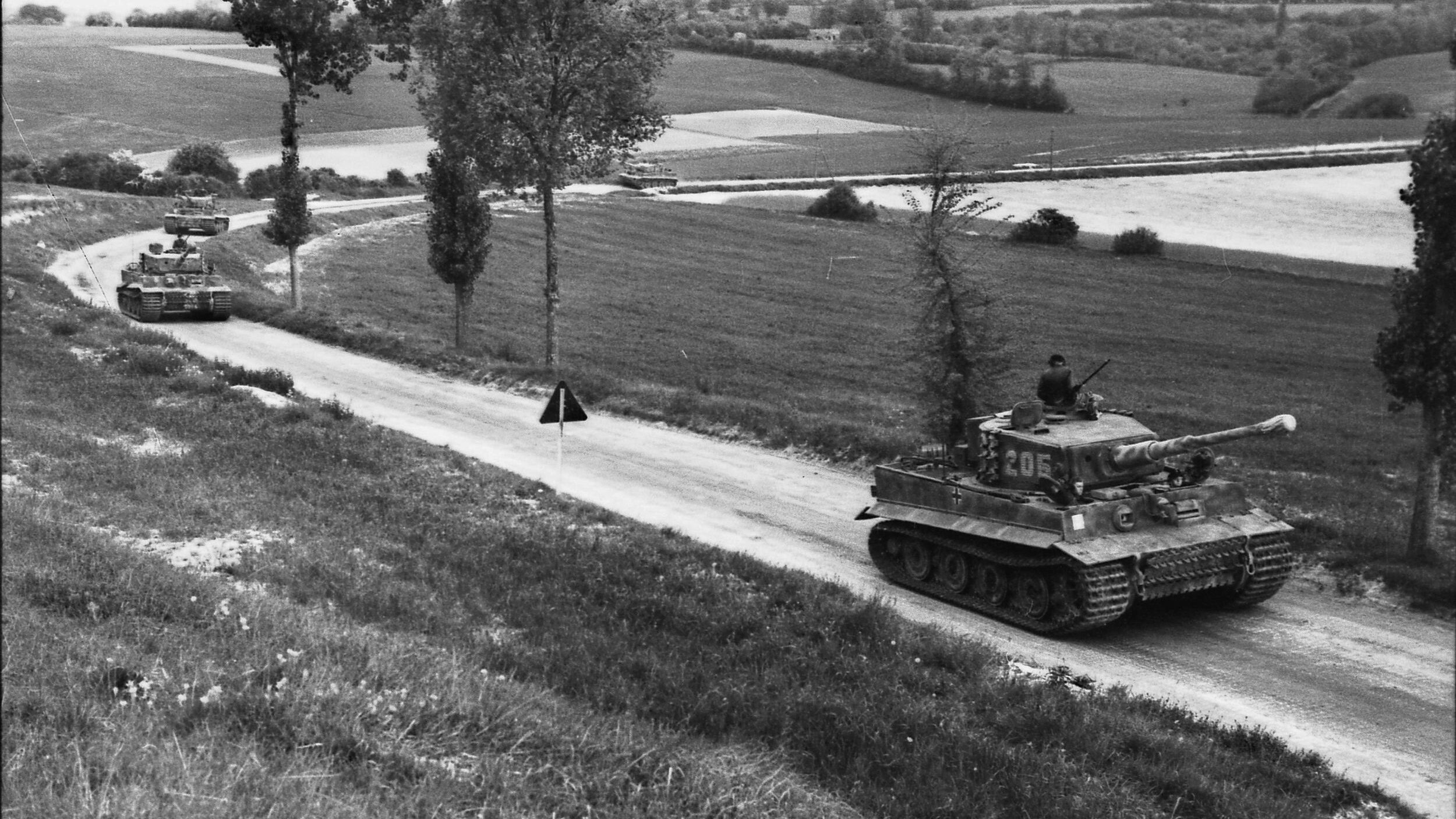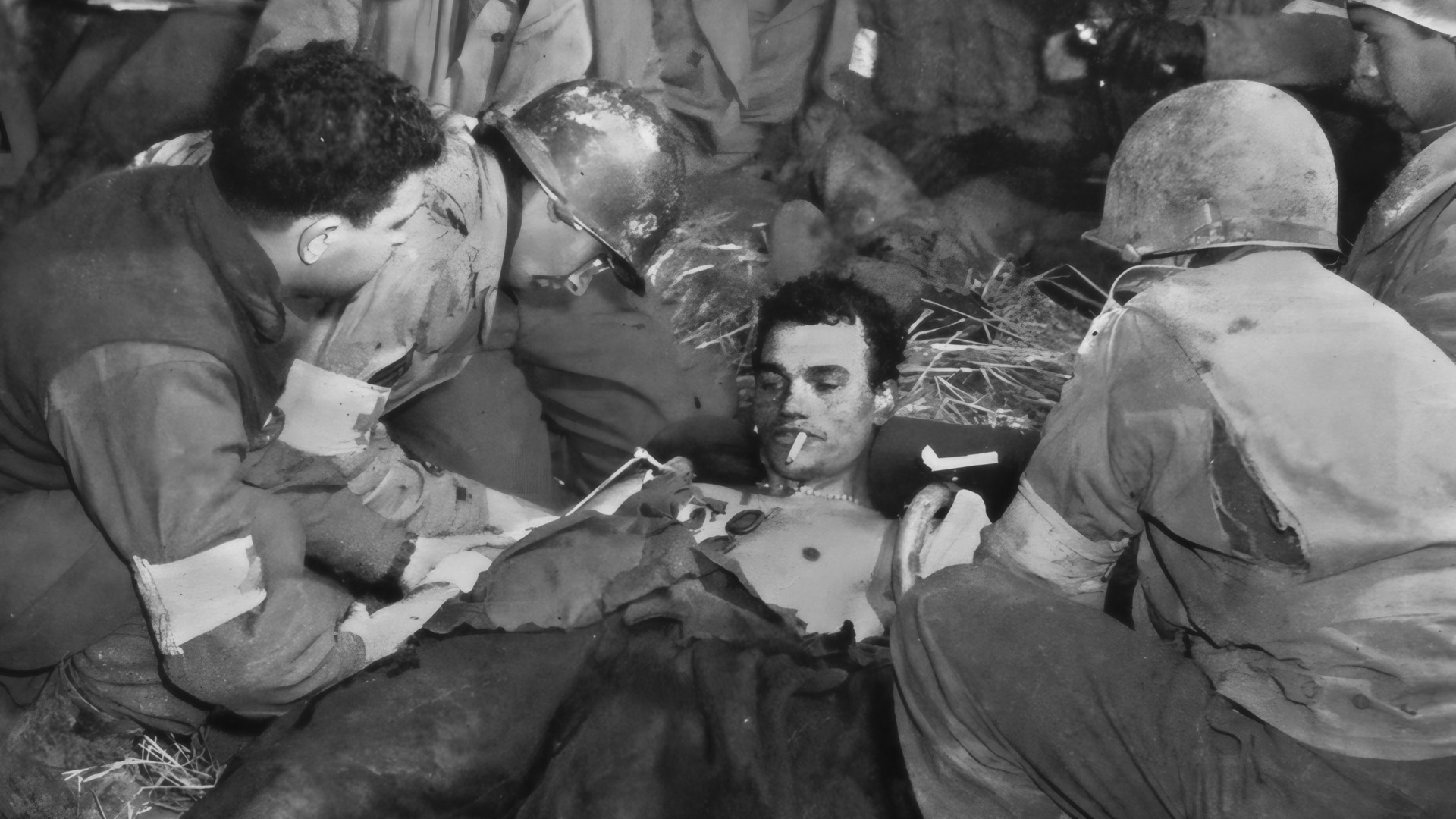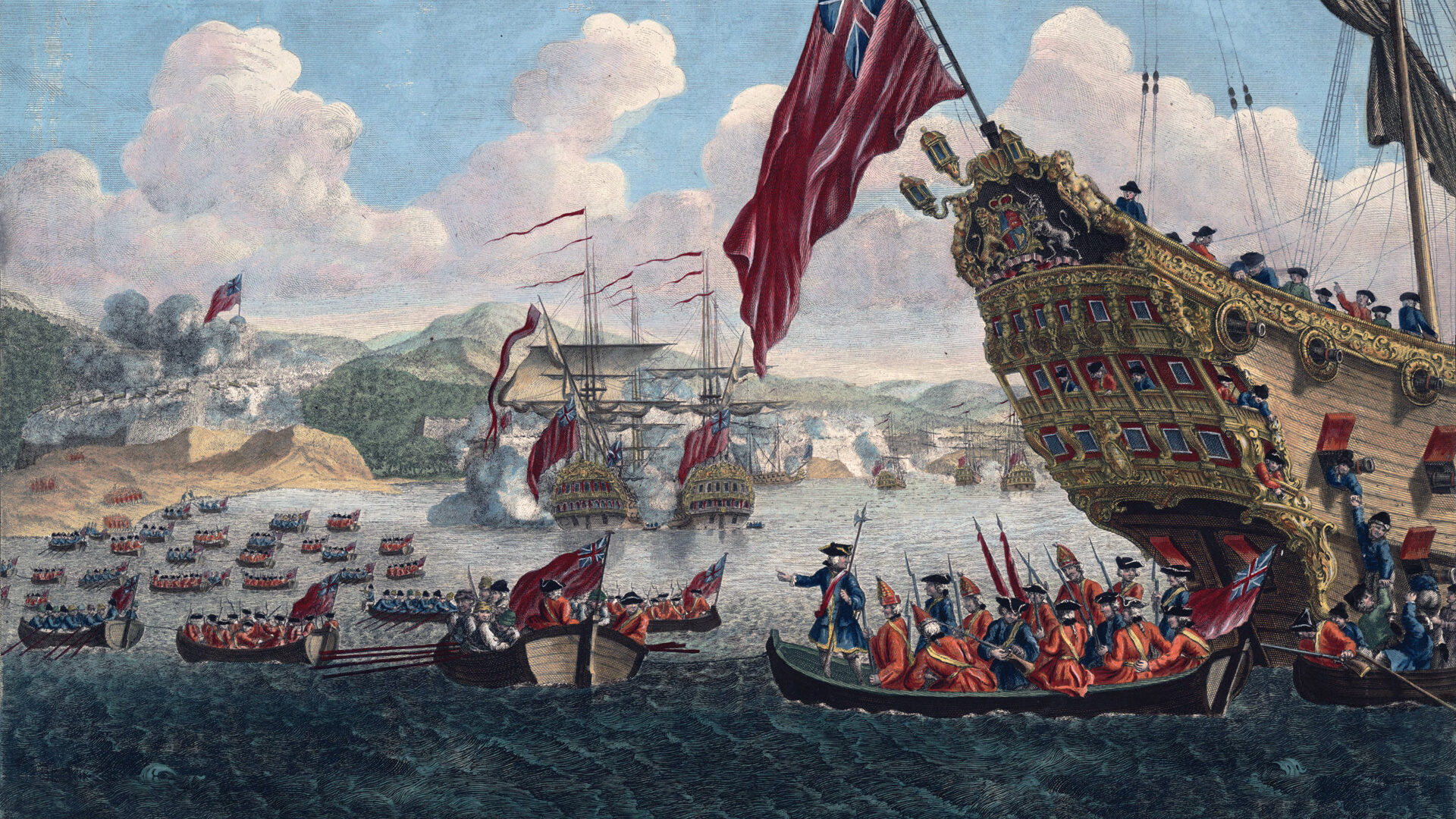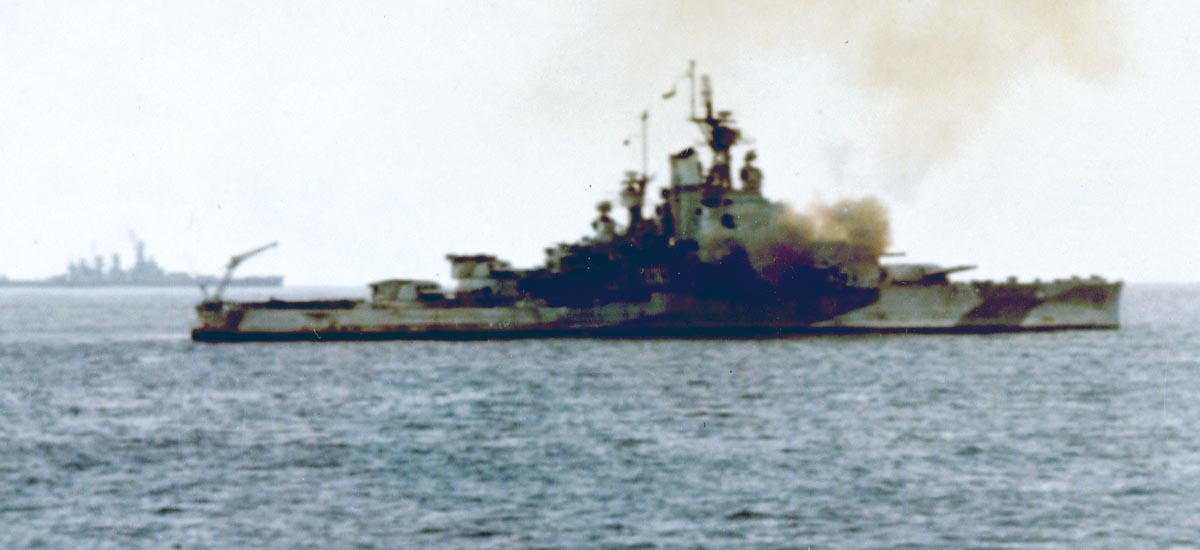By Victor Kamenir
Overshadowed by the Allied landing in Normandy on June 6, 1944, the Soviet Union’s Operation Bagration on June 23 is one of the least-covered campaigns of World War II. The two massive offensives delivered knockout punches that signaled the beginning of the end for the Third Reich.
After halting the German offensive at Kursk in summer 1943, the Red Army permanently seized the strategic initiative. Continuing into spring 1944, the Red Army liberated almost all of the Ukraine on the southern flank of the Eastern Front and similarly pushed back German forces in the north. In the central sector of the front in Belarus, German Army Group Center under command of Generalfeldmarschall Ernst Busch occupied a large bulge facing east, called “Belarus Balcony” by the Soviet High Command.
The exposed balcony presented a tempting target. In May 1944, the High Command of the Soviet Armed Forces, known as Stavka, began planning an ambitious operation to destroy four German armies in Belarus, an area of operations roughly the size of the United Kingdom. The operation had as its goal the encirclement and destruction of Army Group Center. Soviet planners anticipated that if the operation succeeded, it would bring Soviet forces to the pre-war western border of the Soviet Union.
Army Group Center occupied a strategically important position known as the Smolensk land bridge. The strip of land encompassed the territory between the Western Dvina and the Dnieper rivers. Anchored at the city of Vitebsk on the Western Dvina River and the city of Orsha on the Dnieper River, the land bridge was a historical invasion route to Moscow. Four German armies defended the 600-mile-long bulge in this area. These armies, from north to south, were Generaloberst Georg-Hans Reinhardt’s Third Panzer Army, Generaloberst Kurt von Tippelskirch’s Fourth Army, Generaloberst Walter Weiss’ Second Army, and General of Infantry Hans Jordan’s Ninth Army. Army Group Center had a total of 38 divisions.
The total of the four understrength armies came to approximately 500,000 men. The troops were supported by 120 panzers, 450 self-propelled assault guns, and 775 aircraft of Luftflotte 6 (Sixth Air Fleet). The available panzers units were all assigned to the Fourth and Ninth armies. This stripped the Third Panzer Army of its armor altogether and left it a panzer army in name only.
The reason for the scarcity of panzer formations in the Army Group Center was the German High Command’s belief that the next major Soviet offensive would target the Ukraine. To counter this potential thrust, the majority of German panzer formations on the Eastern Front were concentrated just west of the Pripyat Marshes. These forested wetlands were situated between Belarus and the Ukraine.
Army Group Center’s precarious position was further exacerbated by German Fuehrer Adolf Hitler’s demand not to surrender an inch of conquered territory. Strategically important towns and cities were declared fortresses, to shore up porous German defensive lines.
Cognizant of his vulnerable position, on May 20, 1944, Generalfeldmarschall Ernst Busch presented Hitler with two plans of proposed withdrawals. The first plan called for a minor withdrawal to the Dnieper River. The alternate plan called for a withdrawal to the Berezina River. This maneuver would have allowed the Army Group Center to shorten the front lines and create much-needed operational reserves. Obsessed with not giving up an inch of conquered territory without a fight, Hitler rejected both proposals out of hand. Furthermore, he ordered the so-called fortress cities of Belarus to be defended to the last man.
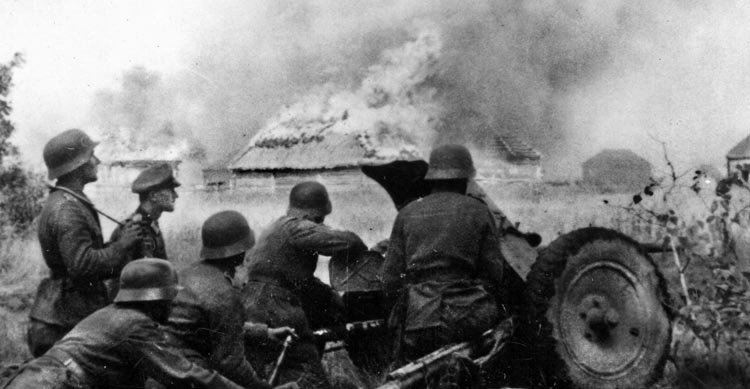
Operation Bagration was named for General Pyotr Bagration, a hero of Napoleonic wars. In preparation for the operation, the Red Army massed substantial reserves. Opposing Army Group Center were four Soviet army fronts: the 1st Baltic Front under Lieutenant General Ivan Bagramyan, the 3rd Belarus Front under Colonel General Ivan Cherniakhovsky, the 2nd Belarus Front under General Grigory Zakharov and the 1st Belarus Front under Colonel General Konstantin Rokossovsky.
The four fronts numbered 1,670,000 men, 33,000 guns and mortars, and 5,800 tanks and self-propelled howitzers. Each army was allocated a tank or mechanized corps to exploit breakthroughs. Separate tank brigades were assigned to support infantry divisions. The objective of the tank brigades was to breach the first line of German defensive positions. Five Soviet air armies, all of the front-level aviation, and almost all the long-range bombers, totaling 5,300 combat aircraft, provided air support for the offensive. Behind German lines, 140,000 partisans operated under direct control from Moscow.
Bitter lessons of the first three years of war taught the Soviets how tenacious the Germans were on the defense. In response, the Soviets formed multiple large-caliber artillery corps, each of which consisted of approximately 1,100 artillery pieces ranging from 76mm to 203mm guns, as well as the dreaded Katyusha mobile rocket launchers. By 1944, Soviet industry was churning out war materiel in ever-increasing quantities, especially the superb T-34 tank. Most German regimental anti-tank units were outfitted with 50mm antitank guns, which were ineffective against the frontal armor of the T-34. For that reason, the Germans resorted to using antitank mines, explosive charges, Panzerfausts, and other various short-range weapons to knock them out.
Due to generous aid from the United States through the Lend-Lease program, Soviet ground forces fielded large numbers of motorized formations. Indeed, the Soviet formations had far greater mobility at that stage of the war than their German adversaries.
Despite their huge advantages in numbers, the Soviet Army had great difficulty achieving and maintaining the degree of professionalism and tactical acumen demonstrated by German soldiers and their commanders. German forces operated in a seamless manner when it came to command and control, and the Red Army still had not achieved parity in this regard.
The Red Army was ready for the operation by mid-May 1944. It was to run its course in two phases. The first phase called for rupturing German defenses along the eastern face of the bulge. The second phase called for Soviet units to surround and destroy German forces defending Vitebsk, Orsha, Mogilev, and Bobruisk.
The Soviet forces intended to do the same thing to these German concentrations that the Germans had done to them in the opening weeks of Operation Barbarossa in 1941. Having lost vast numbers of men and equipment in the so-called cauldron battles early in the war, Soviet generals were keen to exact revenge against the Germans in the same fashion.
In the first phase of the operation, the 2nd Belarus Front had orders to pin down the forces of Army Group Center, while the 1st and 3rd Belarus fronts enveloped German frontline forces in wide flanking maneuvers. The two fronts were allocated two-thirds of Soviet reserves, combat vehicles, and equipment marshaled for Operation Bagration. The 1st Baltic Front was assigned a secondary role of protecting the right flank of the 3rd Belarus Front and keeping the gap open between German Army Groups Center and North.
The second phase of Operation Bagration called for the encirclement of German forces west of Minsk, destruction of the main body of Army Group Center, and an advance to the pre-war border.
Early in the war, many Soviet military disasters could be directly attributed to poor upper-level command and coordination. This time, the priority that Soviet Premier Joseph Stalin and the Stavka placed on cooperation between the fronts was demonstrated by the rank of the individuals assigned to supervise operations. Stavka appointed Chief of Soviet General Staff Marshal Aleksandr Vasilevski to coordinate operations of the 1st Baltic and 3rd Belarus fronts, and it appointed Deputy Supreme Commander Marshal Georgy Zhukov to oversee the 1st and 2nd Belarus fronts.
Deception measures played an important part in Soviet preparations. All efforts were exerted to convince the Germans that the next major Soviet offensive would continue in the Ukraine. Civilian populations were evacuated away from the front lines to minimize the possibility of the Soviet deployments being leaked to the Germans. Front-line Red Army units made a great show of preparing defensive positions. Staff officers overflew Soviet positions to ensure that camouflage measures were observed. Under strict radio silence, units rotated to the rear to practice combined-arms tactics. Simultaneously, Soviet command stepped up efforts to acquire tactical and strategic intelligence about German forces facing them. Soviet air reconnaissance efforts, which were for the most part unimpeded by the German Luftwaffe, gathered valuable information in real time.
Despite Soviet efforts to conceal their massive preparations for the offensive in early June, German Army Group Center headquarters began receiving alarming reports from ground and air reconnaissance and radio intercepts. Army Group Center staff initially disregarded the warning signs; however, intelligence and reconnaissance reports increased in number and urgency. When Soviet long-range aviation began sustained attacks on German airfields June 12, German commanders became convinced of an impending major Soviet offensive. Unable to convince Hitler of the threat, Busch took the opportunity on June 19 to fly to Germany on leave.
Busch hardly had time to unpack when Soviet partisans began striking at vulnerable objectives that night. They mainly targeted German-controlled railroad junctions, bridges, and other strategic transportation points in the German rear. In some locations, they succeeded in halting all rail traffic. This severely impeded the ability of German units to shift reinforcements and supplies to threatened sectors of the front.
On the evening of June 21, multiple waves of Soviet aircraft began bombing German positions. With the heavy concussions of the bombs masking their work, Soviet combat engineers began clearing passages through German minefields. German sentries picked up on the activity in many locations. At 3:00 a.m. the following morning, the leading Soviet infantry units, supported by tanks outfitted with mine plows, advanced on the first line of German defenses. The general offensive began as a series of localized encirclement operations.
Massive artillery barrages rained down on positions of the Third Panzer Army near Vitebsk on the northern end of the bulge. Forming the northern pincer of the envelopment, infantry units of the 1st Baltic Front broke through German forward positions. Their strategy was to bypass Vitebsk and attack it from the rear.
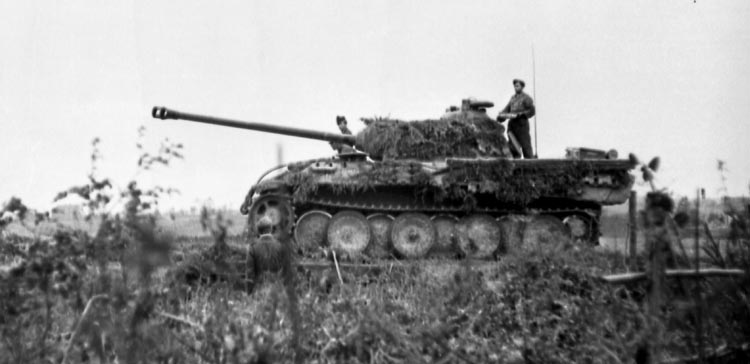
As Soviet shells rained down on German positions, Busch was advised by telephone of the Soviet offensive. He caught the first available plane and by late afternoon was at his headquarters, greeted by grim news of an endangered left flank and the loss of contact with Army Group North.
Despite massive Soviet air and artillery bombardment, German defenders grimly hung onto their positions, and the Soviet infantry was able to achieve only minor penetrations of the forward defenses. Soviet tank brigades alone could not achieve breakthroughs, so Soviet senior commanders deployed their reserve tank corps earlier than they had planned. While the Third Panzer Army was being severely tested, the other three armies of Army Group Center suffered only limited attacks on June 22.
The following morning, Soviet heavy guns once again pounded German positions. Afterwards, the 3rd Belarus Front attacked the XXVII Corps of the German Fourth Army, situated east and south of Orsha. The attack formed the southern pincer of the planned envelopment. The Soviet front had orders to capture Orsha and continue to Borisov, southwest of Vitebsk. The German 78th Sturm Division, from the Fourth Army, put up a determined resistance at Orsha, but could not stop the Soviet onslaught. The 78th was badly mauled in the battle.
Although the first 48 hours was incredibly challenging for German forces, the worst was yet to come. On June 24, the 43rd Army from the 1st Baltic Front and the 9th Army from the 3rd Belarus Front encircled Vitebsk. The capacity of Soviet forces to carry out swift and efficient attacks came as a shock to the Germans.
From the outset of Operation Bagration, Soviet forces exhibited excellent mobility, maintained demanding tempos of operation, and expertly coordinated their forces to achieve breakthroughs. In their attacks, the Red Army forces used a new tactic known as the “rolling double-barrage.” This involved pummeling enemy forward and rear defensive positions simultaneously in order to suppress German anti-tank defenses and break through German lines.
Soviet armor often out-ran effective artillery support during their lightning attacks. When that occurred, Soviet aircraft assumed the role of fire support. German aircraft attempting to slow down advancing Soviet formations had to fight their way through swarms of Soviet fighters, only to run into a dense Soviet network of mobile air defense.
German General of Artillery Georg Pfeiffer’s VI Army Corps was split apart southeast of Mogilev and disintegrated after several days of desperate fighting. When Pfeiffer himself was killed in action four days later, he was replaced by General of Artillery Helmuth Weidling. In heavy fighting, all of the corps’ division commanders were slain. The survivors of the corps fled west in small groups.
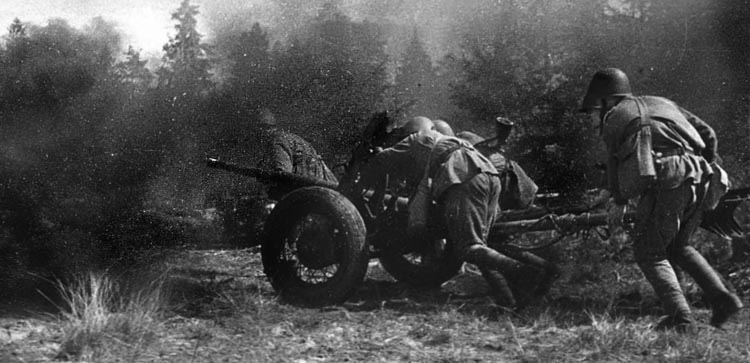
The defenses of General of Artillery Robert Martinek’s XXXIX Panzer Corps collapsed after being struck by two Soviet armies near Mogilev. On its right flank, the XII Army Corps sent its last radio message at 2:00 p.m. After that, nothing more was heard of it. The XXVII Army Corps north of Mogilev also was hit hard. Its troops abandoned their positions and retreated north to Orsha.
Busch’s initial assessment was that his forces could not hold Vitebsk unless his army group received reinforcements. The German High Command, however, was unwilling to detach forces from Army Group North to assist Army Group Center. Elsewhere, Busch strived for a rigid defense in the face of the Soviet blitz, but Army Group Center soon lost all cohesion.
Communications between Busch’s staff and lower-level headquarters broke down entirely. In a merciless litany of destruction, German divisions and regiments fought for their very survival, without guidance from headquarters, at the beginning of Operation Bagration.
On June 24, Hitler, Army Group Center headquarters, and LIII Corps’ commander General Friedrich Gollwitzer all conferred about the German defense. Hitler, as was usual in the latter stages of the war, had taken personal command of the situation. When the Russians completed their encirclement of Gollwitzer’s troops in Vitebsk, Hitler uncharacteristically granted his permission for the remnants of the LIII Corps to attempt to break out.
Gollwitzer and his troops attempted to fight their way out of the encirclement on the morning of June 26, but it was too late. The ring of Soviet forces surrounding the LIII Corps was simply too strong. The heavy fighting at Vitebsk ended the following day. Gollwitzer was among the 10,000 Germans from that sector who were marched into captivity.
The Russians continued carving up German forces in the bulge on June 25-26. Their methodical attacks splintered and destroyed Wehrmacht formations. “The few regiments—often only at company strength—had to try to fight their way to the west through the extensive forest and marsh region,” wrote Werner Haupt, a German veteran of the Eastern Front. “The Soviets pursued throughout, overtaking the German columns, splitting them apart, and destroying them individually. The last transport trains with wounded, weapons, and equipment had left just before the encirclement of Orsha; however, several kilometers later 25 trains were overtaken by Soviet tanks and destroyed.”
After Orsha fell to the Russians on June 26, mobile formations of the 3rd Belarus Front were sent into the gaps of the crumbling Third Panzer Army. Marshal Pavel Rotmistrov’s 5th Guards Tank Army and Lieutenant General Nikolai Oslikovski’s task force, which comprised a mechanized corps and a cavalry corps, turned the disordered retreat of the Third Panzer Army into a rout. At the same time, the outnumbered Luftflotte 6 fought desperately to continue operations, even though the Wehrmacht could do little to protect its forward airfields. Soviet aircraft bombed and strafed the main road from Vitebsk to Lepel, destroying retreating German forces. The road became a veritable charnel house of bombed-out German equipment and smoldering corpses.
Busch flew to Fuehrer Headquarters at the Wolfsschanze in East Prussia on 26 June. He practically begged Hitler to allow him to save the remnants of Army Group Center by withdrawing behind the Dnieper River. Hitler would not hear of it, though. He sacked Busch on June 28, and reassigned him to a remote post in Romania.
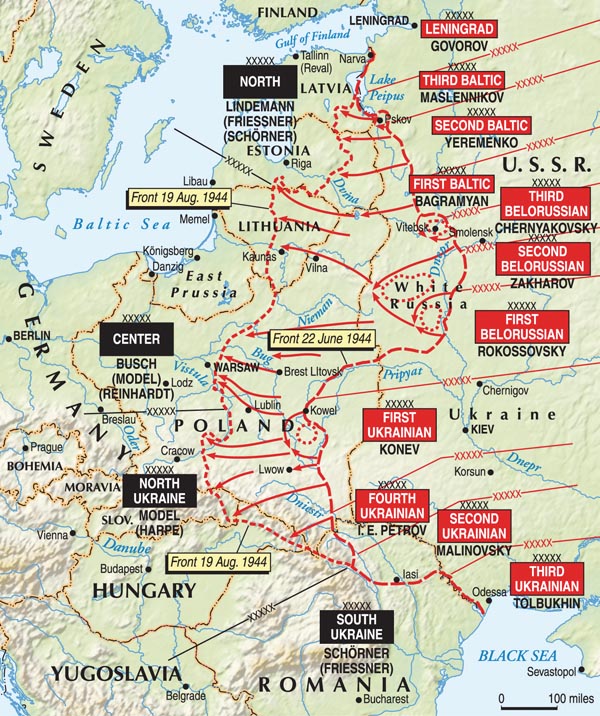
The Soviet success in the Vitebsk-Orsha operation resulted in the destruction of two of the three corps of the Third Panzer Army. As a result, Army Group Center’s left flank ceased to exist, and the road lay open southwest to Borisov and northwest to Polotsk. The Soviets placed a high priority on capturing Polotsk, for German forces operating in that region could threaten the right flank of the 1st Baltic Front. Without any time to rest and refit, Bagramyan’s 1st Baltic Front advanced on Polotsk using the envelopment tactic, which was working extremely well for Soviet forces seeking to isolate and destroy fortified German positions. Without waiting to be surrounded, Generaloberst Carl Hilpert, the commander of the German garrison at Polotsk, withdrew his men to safety on his own authority. Soviet forces reached Polotsk on 4 July and occupied it without a fight, removing the threat to the 1st Baltic Front’s right flank.
At Bobruisk, the German Ninth Army under General Hans Jordan faced the Soviet 1st Belarus Front, the strongest of the four Soviet army groups, under General Konstantin Rokossovsky. The most convenient route to Bobruisk was from the southeast; however, the Germans had established a strong position at Parichi, which barred the Soviet path. Colonel General Pavel Batov, commanding the Soviet 65th Army, decided to bypass the German position via a swamp, which the Germans considered impassable.
“German generals trusted a topographical symbol [for] impassable swamp and succumbed to a conciliatory idea that we would not be able to advance along the swamps,” wrote Batov. Russian combat engineers quickly built several corduroy log roads through the wetlands. Although the Germans monitored the swamps, they had no forces deployed in them. During the first day of the advance, the 65th Army penetrated German defenses up to six miles. A tank corps followed the infantry to exploit the breach in German lines obtained by marching through the waterlogged terrain.
To the north and east of Bobruisk, the Soviet 3rd Army under Colonel General Gorbatov ran into strong German defenses, reinforced by Generalleutnant Mortimer von Kessel’s 20th Panzer Division, Jordan’s mobile reserve. The German panzer division slowed down the Soviet offensive, but was unable to prevent the leading units of the 3rd Army from penetrating into the junction of German Fourth and Ninth armies. As a result, the two armies lost contact with each other. After blunting the attack of the Soviet 3rd Army, General Jordan shifted the 20th Panzer Division south against Batov’s 65th Army. However, the offensive power of the 20th Panzer Division was spent, and its counterattack against Batov was beaten back with heavy losses.
Despite the best German efforts to halt the Soviet offensive, by June 27 the XLI Panzer Corps and XXXV Corps became encircled around Bobruisk in a pocket roughly 20 miles in diameter. General Jordan requested permission for his units to breakout. But the orders from Army Group Center were firm. The garrison of Fortress Bobruisk was told to fight on until the last man. Later that same day, Generalleutnant Edmund Hoffmeister, the commandant at Bobruisk, sent a desperate radiogram to the Army Group Center headquarters. He reported no contact with the XXXV Corps and chaos and panic in the city. On the evening of June 27, the Red Army launched an assault against Bobruisk, with chaotic street fighting lasting through the night and into the next day.
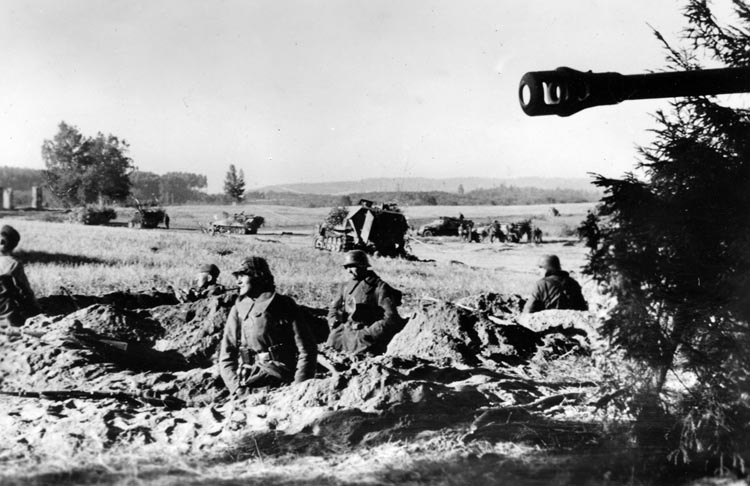
When Hitler finally permitted the breakout in the evening of the following day, it was too late. The few German units still capable of fighting ran into a double-ring of blocking Soviet forces on the morning of June 29. Led by a few remaining tanks from the 20th Panzer Division, the remnants of the XLI Panzer Corps punched through to link up with the Generalmajor Gerhard Muller’s 12th Panzer Division, fighting to reach them from the outside. Disorganized small groups of survivors from the XXXV Corps fought their way north to link up with the Fourth Army. By early July, 14,000 German survivors from the Ninth Army had reached the rapidly retreating German forces. The Germans had suffered approximately 80,000 casualties.
While the Soviet command planned a rapid collapse of German flanks at Vitebsk and Bobruisk, the intent in the center at Mogilev was to pin down General Tippelskirch’s Fourth Army to box it in. After punching through forward German defenses on June 23, the forces of the 2nd Belarus Front slowly pushed the Fourth Army due west. Despite heavy casualties, the Germans were able to organize a fighting retreat to the second defensive line.
Under remorseless Soviet pressure, the orderly pullback began to unravel into a disordered flight, with German units losing contact with each other. Four days later, Tippelskirch gave orders over the radio for the general retreat to the Berezina River and Borisov. However, many units did not receive these orders, and those that did could not carry them out. Disorganized German units streamed west towards the Berezina River, hotly pursued by Soviet tanks and hammered by Soviet aircraft.
The Red Army pursuing the retreating Germans fought their way across the Dnieper north and south of Mogilev. On June 28, they captured the city by storm. Approximately 2,000 Germans in the city were rounded up and marched into captivity.
The night of June 27 was spent in brutal street fighting, with the Germans launching desperate counterattacks in futile attempts to break out. By midday on June 28, the troops of the 2nd Belarus Front had reached the center of Mogilev. German strong points were eliminated one by one, with the last organized German resistance being extinguished in the vicinity of the railroad station.
To buy time for the remnants of his Fourth Army to reach the Berezina River, Tippelskirch cobbled together a kampfgruppe (“battle group”) under the command of Generalleutnant Dietrich von Saucken. It consisted of the 5th Panzer Division, the 505th Heavy Panzer Battalion, a few military police companies, and an engineer training battalion. Von Saucken’s men took up positions guarding the bridges in and near Borisov to cover the withdrawal of the Fourth Army. General der Panzertruppe Karl Decker’s 5th Panzer Division was a powerful formation. As a result of a recent refitting, it was nearly at full strength. It boasted not only a battalion of 76 Panzerkampfwagen V Panther medium tanks, but also 45 Panzerkampfwagen VI Tiger heavy tanks of the 505th Heavy Tank Battalion.
Generalfeldmarschall Walter Model, the newly appointed commander of Army Group Center, arrived on June 28 to take charge of the worsening situation. He established his headquarters at Lida, which was 100 miles west of Minsk. The headquarters staff lacked a clear picture of where the army group’s extant units were located. With sporadic radio and telephone communications, contact between the army group headquarters and its units was maintained by sturdy Fieseler-Storch aircraft. Reinforcements in the form of divisions that Hitler had released from reserves, either of the High Command or Army Group North, had been arriving since June 26. The new reinforcements were fed into the fray just as the 5th and Generalmajor Gerhard Muller’s 12th Panzer Divisions had been before them.
Soviet tanks reached the Berezina River at Borisov on June 29. Russian combat engineers deployed several pontoon bridges so that the rapidly advancing forces could continue their westward attack. Von Saucken’s kampfgruppe held on. In so doing, it bought time for the survivors of the XXVII and XII corps to reach the new German frontline.
When Russian forces fought their way into Borisov the following day and clashed in the streets with German troops, Von Saucken issued orders for his men to withdraw behind the Berezina River. Despite all odds, survivors from the destroyed units continued to trickle into to German lines. With the Soviet forces fully in control of all available roads, the stragglers had to make their way west through forests teaming with vengeful partisans.
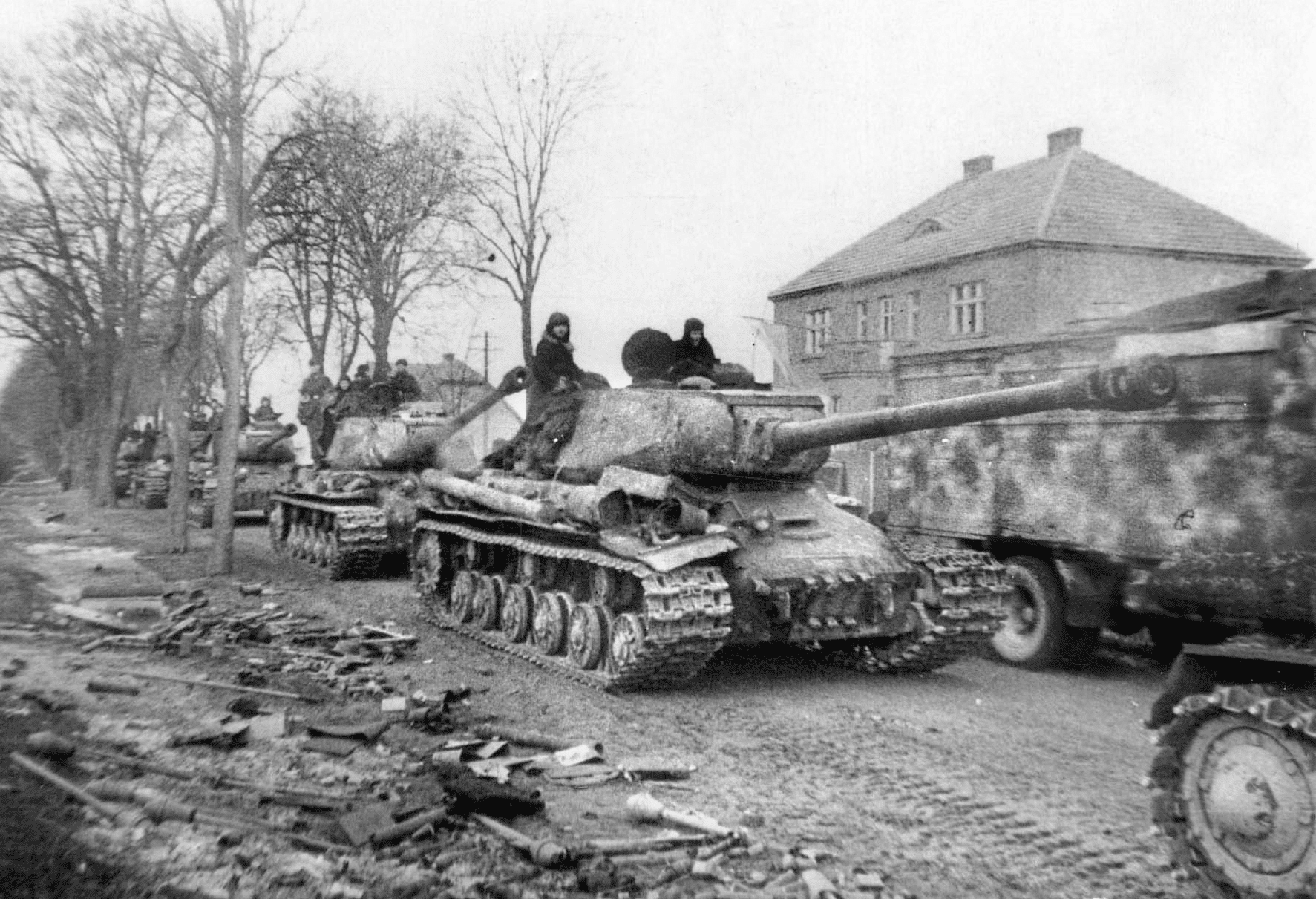
“Burning villages, guns and infantry fire, muffled explosions, and detonations mixed in with the thundering ‘Hurras,’” recalled one German soldier who survived the campaign. “Whoever fell out because of wounds or illness, experienced the horrible fate of the abandoned. Marshes, rivers, thick forests, the heat of the sun, hunger, and lack of water had a terrible effect. What drove us on was the unshakable will to reach the German front.”
With the fall of Bobruisk and Vitebsk, both flanks of Army Group Center were shattered, and the road to Minsk was open from southeast and northwest. As the first phase of Operation Bagration was completed, Soviet forces briefly halted on the Berezina River to resupply, reorganize and receive reinforcements. Success came at a great price, and many Soviet units had suffered significant losses. While their ground units halted, Soviet aircraft continued to attack the retreating Germans. The Soviet pilots flew nearly unopposed by the Luftwaffe. The short pause allowed Model to establish a new defensive line running north and south through the town of Molodechno and create some reserves from the arriving reserve divisions.
Northwest of Minsk, the 5th Panzer Division made one more attempt to delay the inevitable. In the fighting on July 1-2, the Soviet 5th Guards Tank Army was gutted, but the 5th Panzer’s combat power also was spent. It was down to 18 panzers. All of the 505th Heavy Tank Battalion’s Tiger tanks were lost in the hard fighting.
The vanguard of the Soviet 2nd Guards Tank Corps reached the northwestern outskirts of Minsk on July 2. At the same time, a Soviet mobile task force captured Nesvizhz, thereby cutting off German retreat toward Baranovichi. Before the trap closed, the Germans were able to evacuate 20,000 wounded and rear-echelon troops from Minsk.
The following morning, tanks from the 2nd Guards Tank Corps punched their way into Minsk from the northwest. German resistance collapsed rapidly, and by the end of the day, the capital of Belarus was liberated, a major political coup. Approximately 100,000 German soldiers were trapped in a large cauldron west of Minsk. With Tippelskirch outside the pocket, commander of the XII Corps Mueller took command of the encircled survivors of the Fourth Army.
Surrounded German troops were constantly being pounded by Soviet artillery and fighter-bombers, steadily breaking up resistance into smaller and smaller pockets, which were mopped up by Soviet infantry. A group of several thousand German soldiers under General Hans Trout, commander of the 78th Sturm-Division, was wiped out, and Trout himself captured on July 6. Realizing that further resistance was impossible, two days later Mueller surrendered his forces southwest of Minsk. For the next several days, Soviet infantry and partisans combed the woods near Minsk, hunting down German stragglers.
With Minsk taken, the 3rd Belarus Front received orders to take Lida and Vilno by 12 July and establish a beachhead on the west bank of the Neman River. Vilno was a tough nut to crack. Generalmajor Reiner Stahel’s 12,000 Germans held strong positions in the fortress city.
The 5th Guards Tank Army and the 3rd Guards Tank Corps bypassed Vilno on July 7. They swung around from both the north and south. As the Soviet forces approached the city, an uprising by the underground Polish Home Army flared up in Vilno. The action was part of the efforts by Polish government-in-exile to establish a bargaining position after the defeat of Germany. While the military action was directed against the Germans, political aims were focused against the Soviets. The Polish government-in-exile located in London was hoping to position itself as an equal partner to resist Stalin’s establishing political dominance over Poland after the war.
German reinforcements arrived in Vilno during the night of July 7. They were just in time, for the next morning leading infantry units from Soviet 5th Army began assaulting the city from southeast. Tanks from the 5th Guards Tank Army and the 3rd Guard Tank Corps linked up two days later just west of Vilno, thus encircling the Germans inside the fortress city. Over the next three days, brutal street fighting raged.
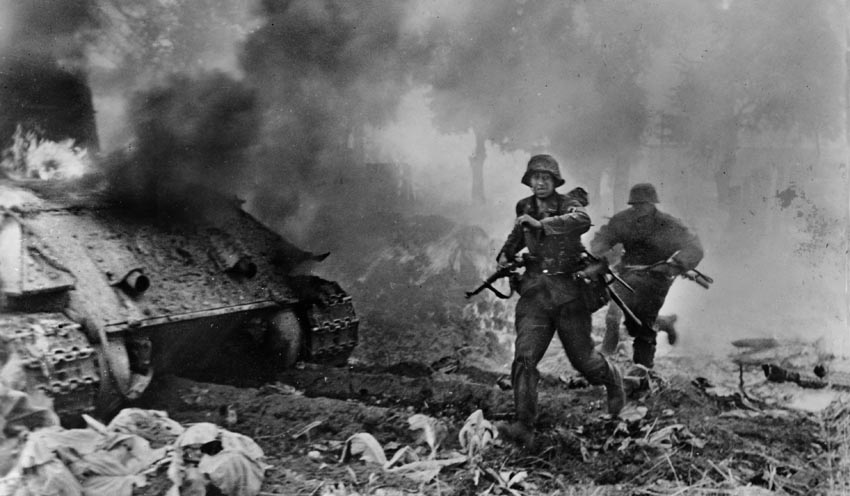
Assaults by Polish resistance fighters inside the city bedeviled the German defenders at the same time they were trying to fend off Soviet attacks from the outskirts. The Germans sold their lives dearly, and Soviet casualties were severe. German reinforcements desperately tried to reach their beleaguered comrades from the west; however, the Soviet ring around the city was constantly being reinforced, and all German efforts to relieve the trapped men failed. Two German pockets of resistance remained in the western suburbs of Vilno when Stahel gave orders to break out on July 12.
That night, the German 6th Panzer Division and part of Panzergrenadier Division Grossdeutschland opened a corridor to the beleaguered German forces in Vilno. Before the Soviets closed the gap, 3,000 Germans escaped. But the Germans lost 8,000 killed and 5,000 captured in the final Russian assault on the city.
The Soviets established bridgeheads on the west bank of Neman River on July 15. For the next few days, the Germans made desperate counterattacks in the hope of dislodging the Russians. Despite best German efforts, the Red Army units maintained their positions and even expanded them. By that point, the German territory of East Prussia was within striking distance.
Once the city was firmly in Soviet hands, NKVD internal-security units began disarming and interning Polish Home Army fighters, forcing those who escaped the dragnets back underground. This action clearly demonstrated to the Polish government-in-exile that Stalin was not going to acknowledge them as equal partners or to allow armed formations, inherently hostile to the Soviets, to remain behind the front lines.
While the Soviet offensive continued unstoppably, the Germans were still capable in some instances of inflicting punishing losses on the Russians. For example, Major-General Filipp Rudkin’s 11th Tank Corps advanced on the left flank of the 1st Belarus Front without conducting reconnaissance. The tank corps ran headlong into well-entrenched German anti-tank positions two miles south of Kovel. In the ensuing fighting, the tank corps lost 84 tanks. Stavka subsequently removed Rudkin from command.
In order to demonstrate to the world the success of the summer offensive, Stalin ordered a prisoner parade to be conducted in Moscow. Fifty-seven thousand German prisoners captured at Minsk were transported to Moscow and, on 17 July, marched in two giant columns through the city center. The prisoner columns were followed by street sweeper trucks, symbolically cleansing the ground of the so-called Nazi filth.
The border city of Brest was liberated on July 21, and the Red Army entered Polish territory, taking Liublin on July 24. When Soviet forces reached Liublin, they liberated Majdanek, the first concentration camp encountered by the Red Army. In a cruel twist of fate, once the liberated prisoners were moved out, the victorious Red Army detained members of the Polish Home Army at Majdanek.
As the Red Army approached Warsaw on August 1, elements of the Polish Home Army rose up against the Germans again. Although the Warsaw Uprising lasted 63 days, the allies took no action other than to air drop some supplies. As for the Red Army, it halted at the city’s eastern suburbs and stood passively by while the Germans slaughtered the resistance forces.
Elsewhere on the Eastern Front, Soviet forces steadily advanced throughout August. They succeeded in liberating Belarus, parts of the Baltic States, and eastern Poland. On August 28, the Red Army shifted temporarily to the defensive. That move marked the end of Operation Bagration.
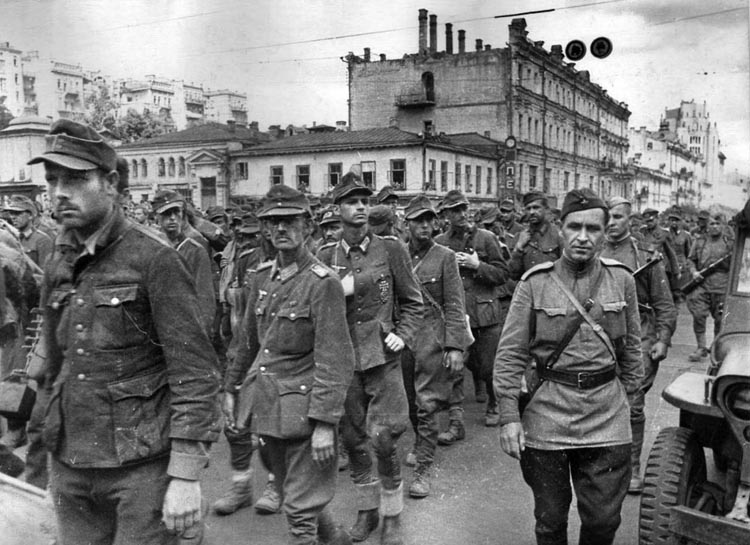
Model was unable to prevent the destruction of Army Group Center. Of its 38 divisions, 28 were lost in the savage fighting between June and August. Official German losses were cited as 26,000 killed, 110,000 wounded, and 263,000 captured or missing. Yet a large percentage of German troops missing in action were actually killed. German headquarters frequently designated entire units as missing when their fate was unknown. As for the Red Army, it suffered 178,000 killed, missing, or captured, and another 587,000 wounded. These were extremely heavy losses for a victorious side.
Operation Bagration heralded the certainty of German defeat, leading to Allied hopes of ending the war in 1944. Bagration was one of the largest offensives conducted by the Soviet Union during the war.
But the Germans fought on. With defeat all but certain, they continued to fight brilliantly to the bitter end. Commanders such as Generaloberst Gotthard Heinrici, who slowed the Soviet advance on Berlin at Seelow Heights in mid-April 1945, helped prolong the war in Europe.
After Hitler died on April 30, Generaloberst Alfred Jodl, representing the German High Command, traveled to Reims, France, where he signed Germany’s unconditional surrender on May 7. The surrender became effective the following day, and was celebrated as Victory in Europe Day.
